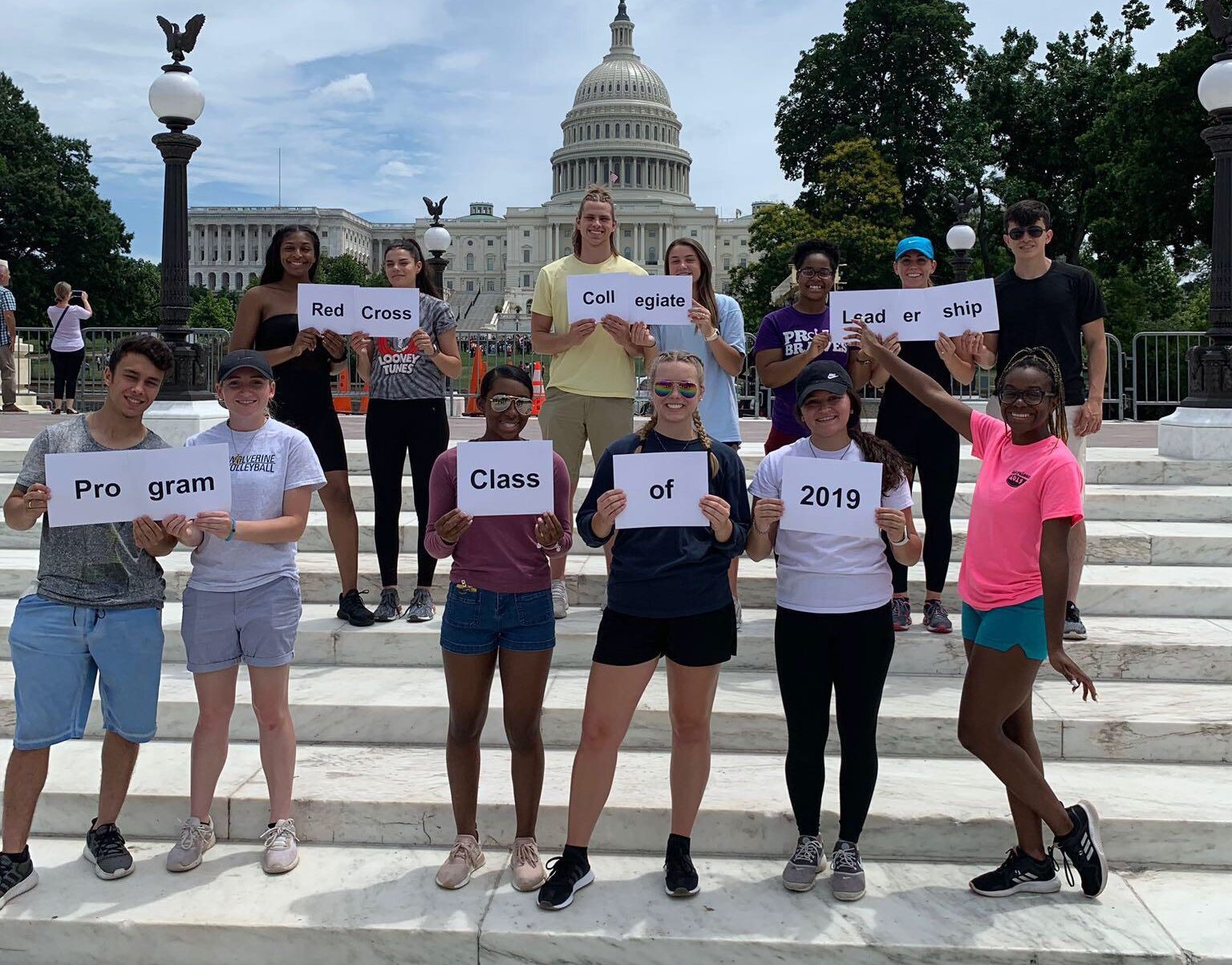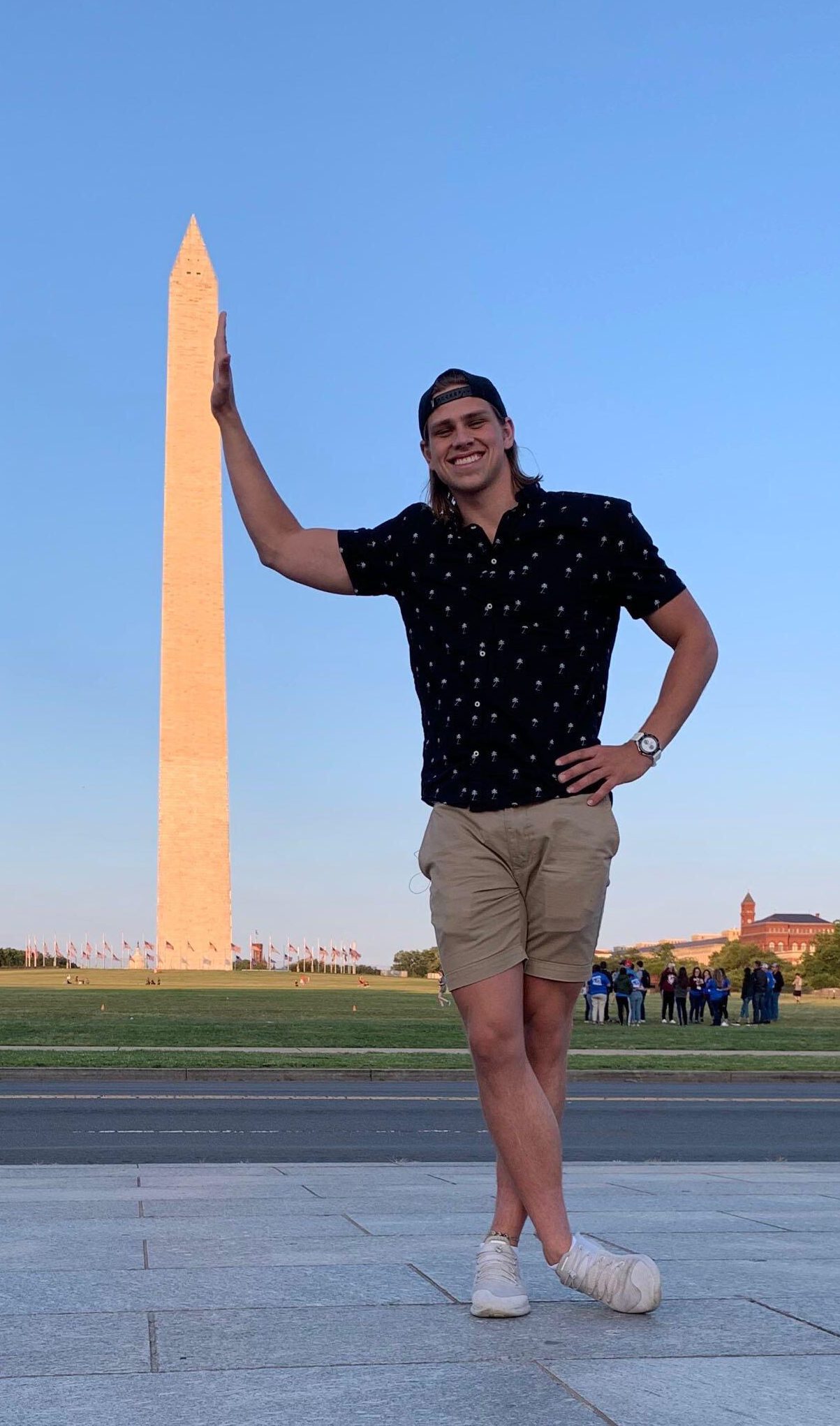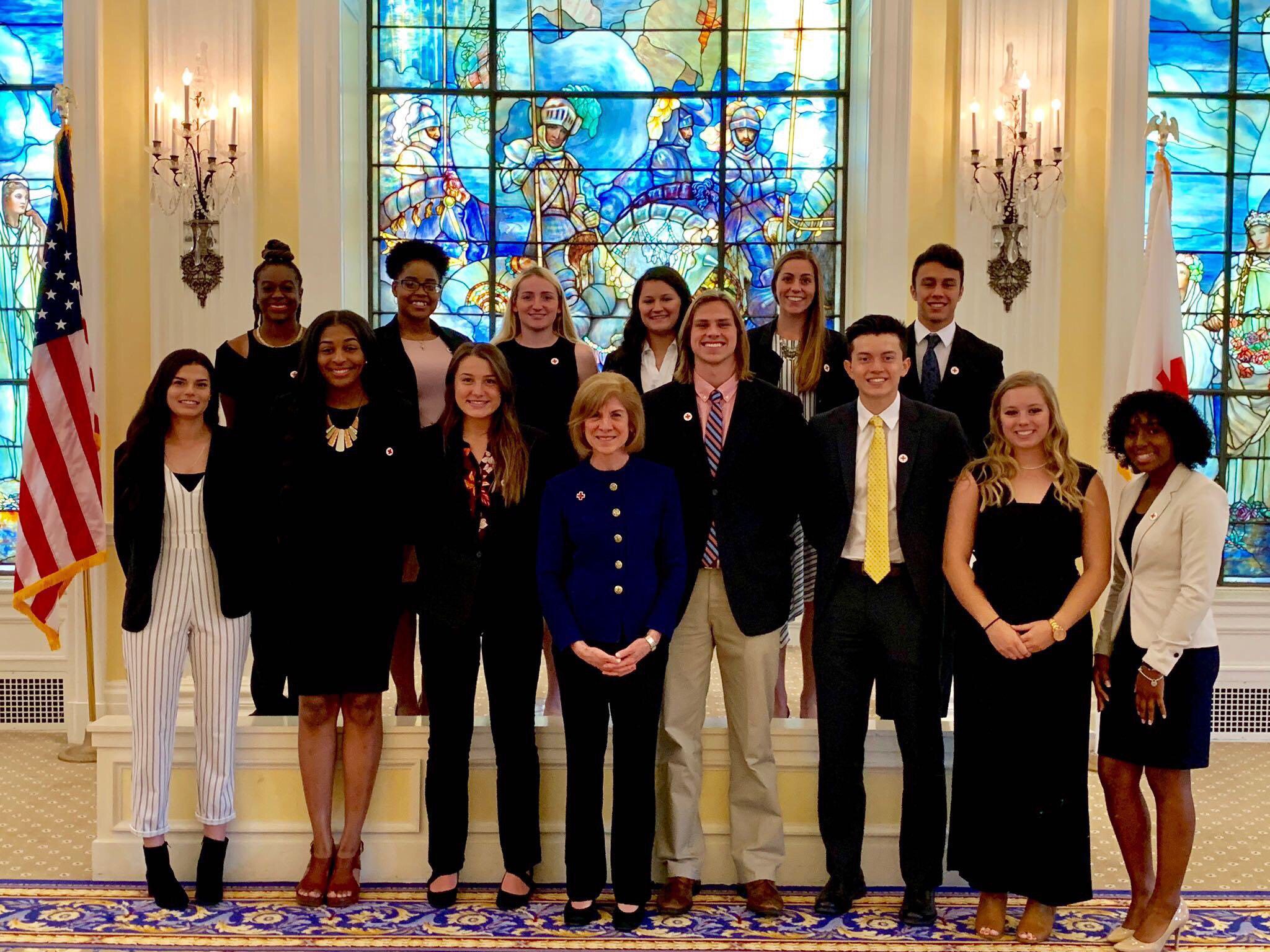
HILLSBORO, Kan. — Tabor College junior Wyatt Bell was selected to participate in the Red Cross Collegiate Leadership Program in Washington, D.C., this summer. A tight end on the Bluejay football team and  Presidential Leadership Program Scholar, Bell spent two weeks with other college students working with Red Cross leadership.
Presidential Leadership Program Scholar, Bell spent two weeks with other college students working with Red Cross leadership.
“The program is specifically for NAIA student-athletes around the country, so that was the initial draw,” Bell said. “It also lined up with my interest in science as well as servant-leadership. There were a lot of unknowns about the program logistics when I first applied, but it has far exceeded my every expectation.”
The program provides student-athletes with the opportunity to develop leadership skills and inspire a new generation of volunteers by organizing blood drives for their classmates and community. Bell’s experience began with training, mentoring and networking during a two-week internship at Red Cross headquarters in Washington.
The internship provides students like Bell the chance to receive coaching from senior Red Cross leadership. Participants can gain lifelong skills that can have an impact on their campus and their future careers. Bell will return to campus to encourage fellow students to join in the mission to help save lives through blood donation. Bell received a $2,000 scholarship for participating in the program.
“We have learned about each and every service the Red Cross offers, but have focused and honed in on the biomedical blood services,” Bell said. “I have learned how crucial blood donations are to hospitals around the world, because the Red Cross alone supplies 40 percent of the world’s blood for transfusions.
“Every time someone gives blood, they are saving three people’s lives,” he added. “I have had the opportunity to focus on my leadership skills and how I can apply those to my vocation. One quote that has stuck with me through this program is, ‘Make a life, not a living.’ This is an important piece of the puzzle when you are figuring out where your passions lie and what your purpose in life is.”
Nearly 20 percent of the millions of blood donations made each year come from young donors, such as college students, according to the Red Cross. In about an hour, volunteer blood donors can help make an impact on campus while helping save lives in the community and beyond. Bell plans to put into practice what he has learned when he hits the campus in August.
“I plan to work closely with Taytum Miller, Science Club president, and completely overhaul the blood drive culture on campus,” he said. “I want there to be excitement and competition when people hear about the blood drives.”
 Competition runs in Bell’s blood: “I am working on some intercollegiate competitions between Tabor, Ottawa and McPherson, as well as competitions among the different sports teams and clubs.”
Competition runs in Bell’s blood: “I am working on some intercollegiate competitions between Tabor, Ottawa and McPherson, as well as competitions among the different sports teams and clubs.”
Bell wants to make others aware of the importance of blood drives.
“I am also working on bringing a much more energetic marketing technique back with me, such as giving presentations to educate people on the need for blood, and possibly even a big-time chapel speaker,” he said. “I am very enthusiastic about the future of blood drives, and I hope I get a positive reaction from faculty and the students.”
To make an appointment, or to learn more about blood drives, download the American Red Cross Blood Donor App, visit RedCrossBlood.org or call 1-800-RED CROSS (1-800-733-2767). Completion of a RapidPass online health history questionnaire is encouraged to help speed the donation process.
To get started, follow the instructions at RedCrossBlood.org/RapidPass or use the Blood Donor App. A blood donor card or driver’s license or two other forms of identification are required at check-in. Individuals in most states who are 17 years or older (16 with parental consent where allowed by state law), weigh at least 110 pounds and are in generally good health may be eligible to donate. High school students, and other donors age 18 years and younger, also have to meet height and weight requirements.
